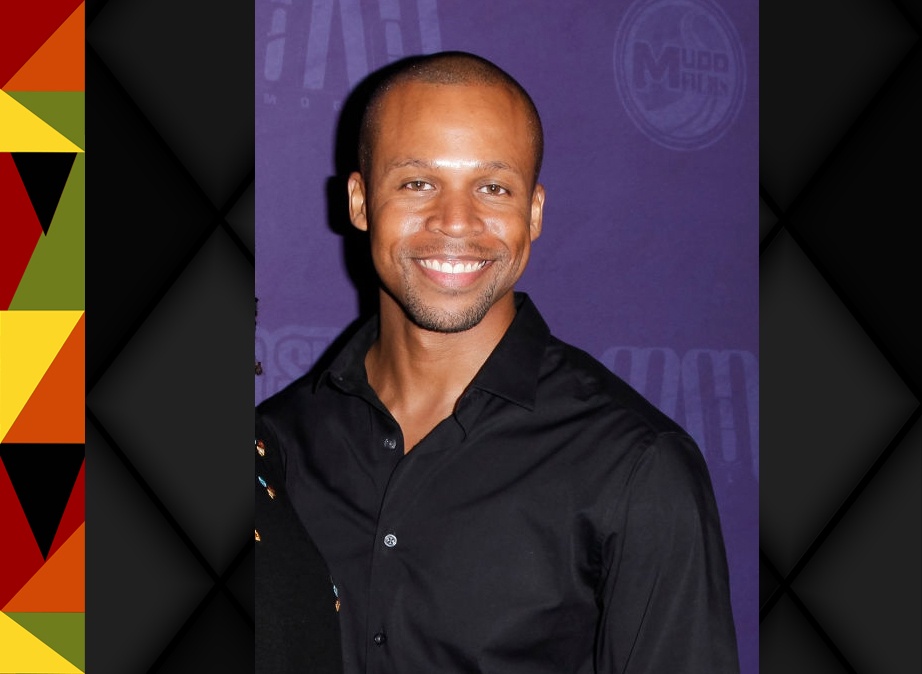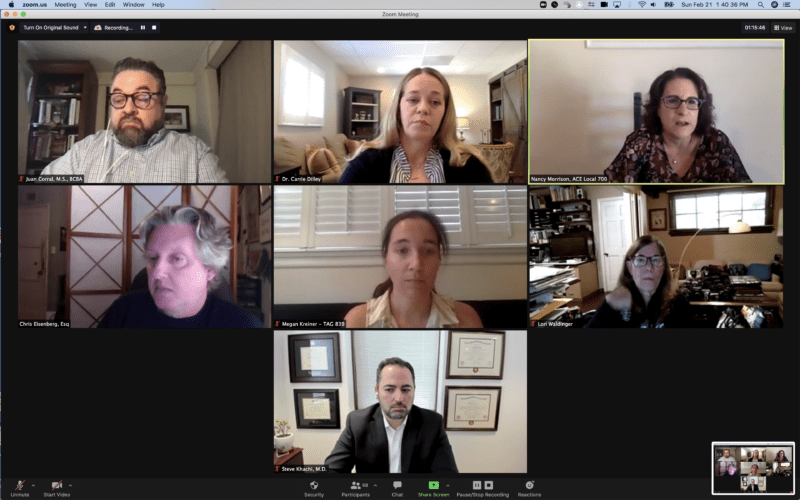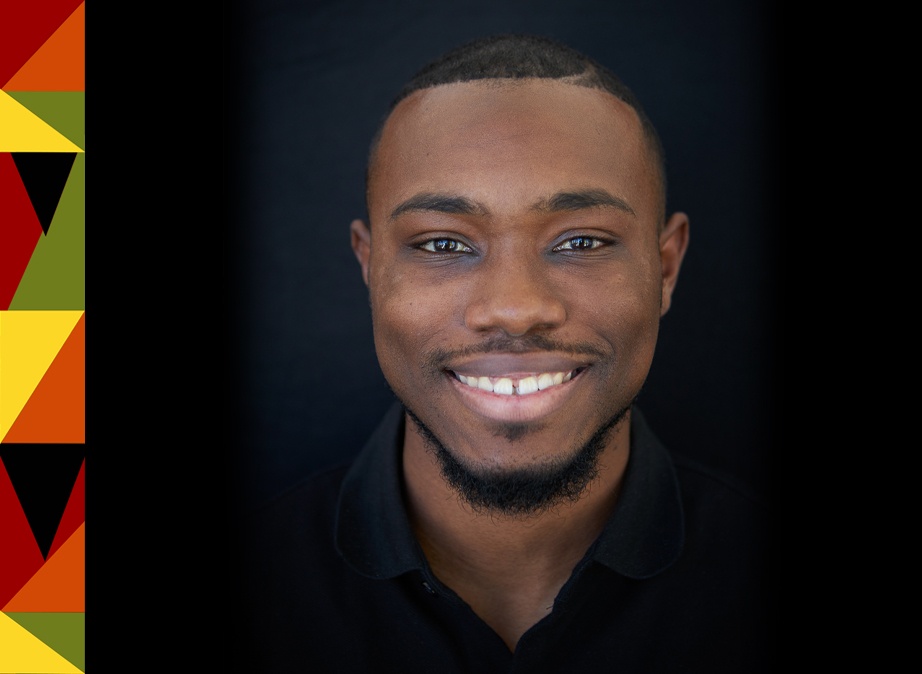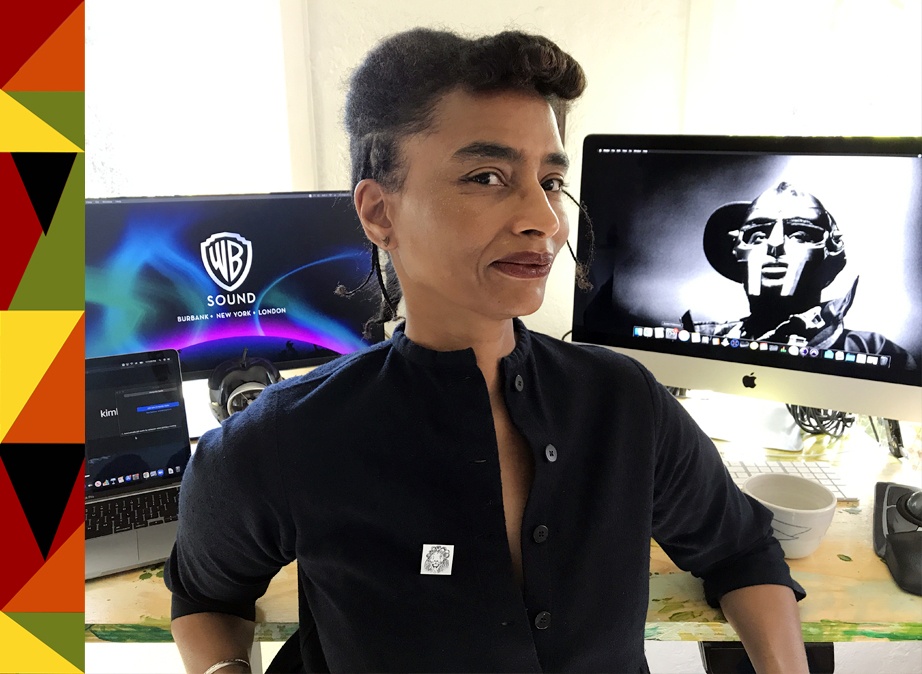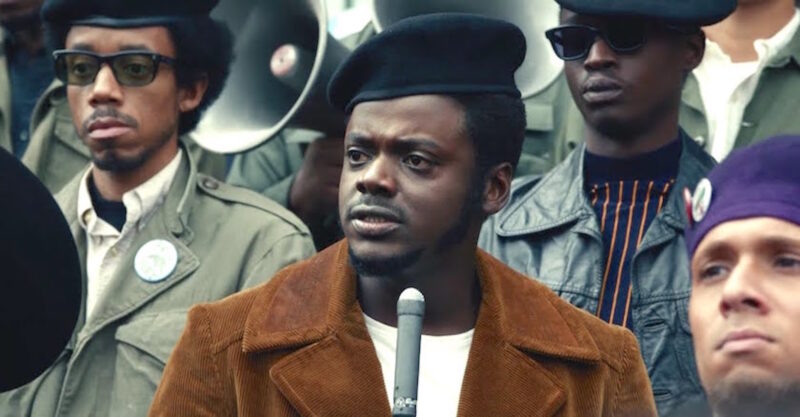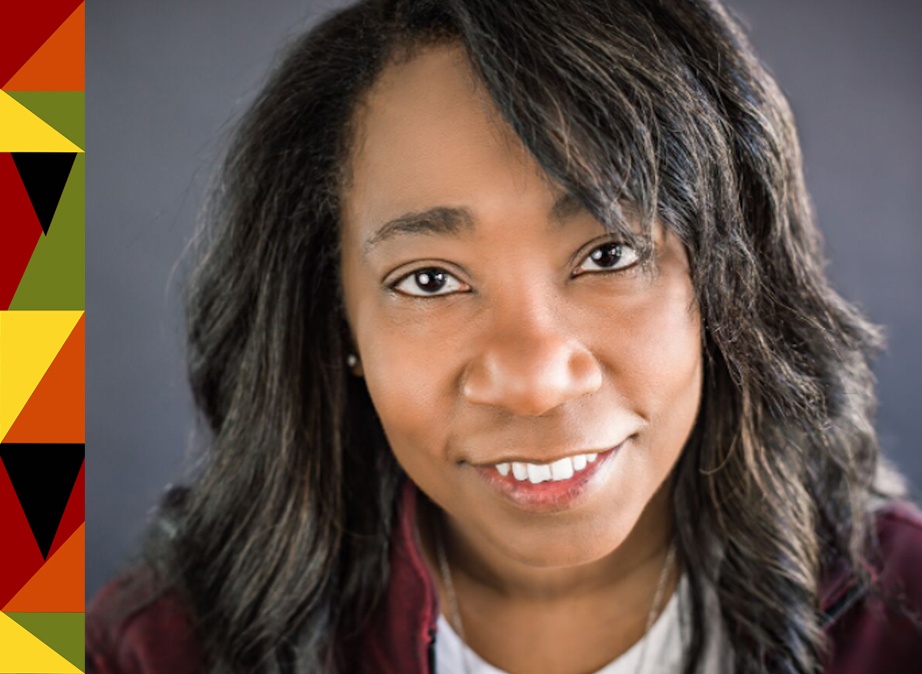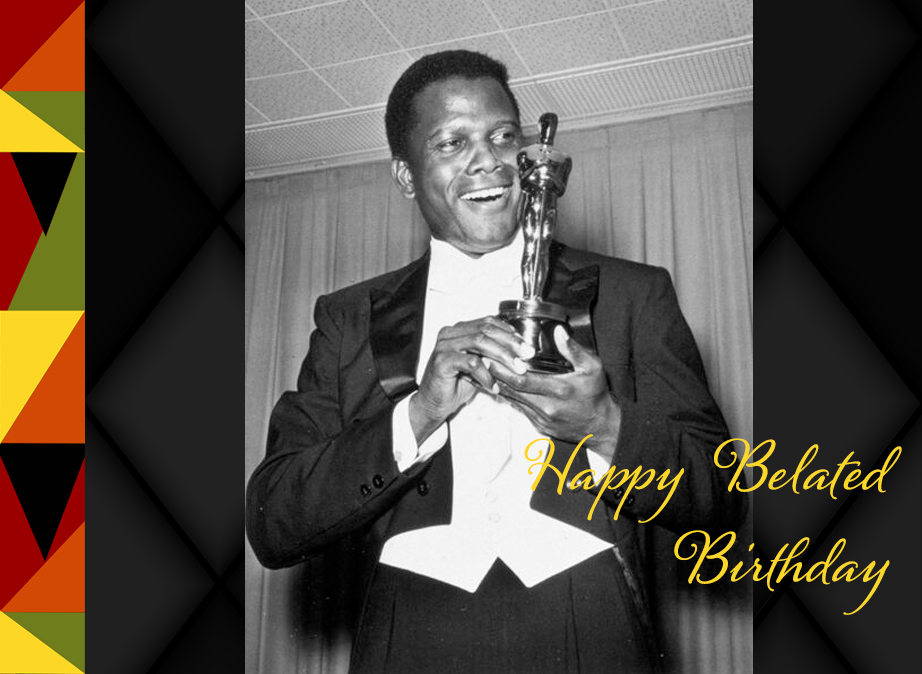Web Exclusives
IATSE Women’s Committees Aim to Help Parents with Neurodiverse Children
By Su Fang Tham
The women’s and family committees of various IATSE guilds have long wanted to organize shared events that would benefit members across the 13 Hollywood guilds.
Last year, production designer Miranda Cristofani and board member of the Art Directors Guild Local 800 contacted MPEG National Executive Director Cathy Repola and Women’s Steering Committee (“WSC”) Co-Chair Dorian Harris, ACE to discuss possible ideas. After months of planning, the first such collaboration bore fruit Feb. 21, with the panel “Brain Work: Industry Parents on Raising the Neurodiverse Child.”
A panel of clinicians, special education advocates and psychologists shared valuable insights with more than 70 participants who joined the two-hour discussion on how parents can best navigate the various support systems when it comes to raising children with autism spectrum disorder and other neurodiversities.
What many parents may not know, however, is that these neurodiverse conditions may not always be due to genetics or natural factors. Although minuscule, there could be a chance that a condition such as this is the result of medical negligence during pregnancy treatments or birth. If such is the case, then getting in touch with expert medical malpractice attorneys here could help parents determine whether a case for the same can be built; acquiring the necessary compensation in this situation could help parents cope with many of the financial aspects that comes with raising a child.
Besides that, parents often require ample support to ensure that they are providing for their child and doing their best to figure out the nuances that come with raising a child with special needs.
Production designer Denise Pizzini – representing the Art Directors Guild Local 800’s women’s committee – hopes this will be the first of many such collaborative efforts.
“One of our goals at Local 800 is to unite the IATSE Hollywood Women’s Committees,” she said. “We’re all part of the same community and face the same issues. I want to thank all the women who worked really hard to organize this amazing event. And a special shout out to the women’s committees of the Editors Guild and the Animation Guild.” [The Animation Guild was in fact represented through its Family and Membership Committee. — ed.]
Before jumping into the nitty-gritty, co-moderator Nancy Morrison, ACE, of MPEG’s Women’s Steering Committee, brought up a very relevant feature documentary to the topic at hand. In the 2016 coming-of-age story “Life, Animated,” a non-verbal autistic boy named Owen – who is a huge fan of Disney animated films – encounters a breakthrough when his dad was able to communicate with him as his favorite Disney characters.
Co-moderator and animation artist Megan Kreiner (of Animation Guild Local 839) – whose son was diagnosed at age four – found the film especially poignant due to her profession. “It was a hopeful and delightful experience to see an artform that my colleagues are so passionate about become an instrument that helps a child make sense of their world,” she said.
After sharing a similar story (one of the children she treated once communicated with her via Pixar characters), licensed clinical psychologist Carrie Dilley, PhD. – owner of private psychology practice Synergy Psychological – emphasized the importance of early intervention. “A neuropsychological evaluation is the most comprehensive evaluation to determine what’s going on from a cognitive standpoint,” Dilley said. “However, a thorough evaluation can’t be done until the child is over six or seven years old.”
Once the appropriate diagnosis is obtained, parents often have to trudge through a maze in navigating the school systems, medical professionals and insurance coverage, all of which have their own set of convoluted lingo and acronyms. For example, in California, the IEP (Individualized Education Program) is up for re-evaluation every three years, and if the parents have any concerns, they have the right to request a reassessment via an IEE (Independent Educational Evaluation).
Kreiner also wanted to know whether IEPs are intended to support the gifted side of the child that often comes with an autism spectrum diagnosis. Veteran advocate and educational consultant Lori Waldinger has spent years advocating for students’ rights to secure appropriate educational services and helping parents navigate the school system. The majority of autistic children experience learning difficulties. If the parents believe their child might benefit from attending a school that focuses on dyslexia, they should look into institutions like Sage School (https://www.sageschool.net/) or other similar ones.
“It is very important that parents advocate for the unique needs of the child, so the IEP should account for the deficits as well as the strengths,” she emphasized. Taking a holistic approach when it comes to the IEP, she looks at the broader definition of its direct goal – academic performance – which should rightly include social, recreational and any other aspects of life that could impact the child’s overall education.
One of the questions from the participants surrounds the rights that neurodiverse children and their parents have when it comes to education. Special Education attorney Chris Eisenberg, Esq. – whose 17-year-old son was diagnosed with autism at the age of two – reminded the group that all neurodiverse children have the right to a Free Appropriate Public Education in the least restrictive environment, or better known as FAPE. In order to be eligible for an IEP, the child has to meet one of 13 specific disabilities and has a proven need for special education services. When it comes to one of the main differences between an IEP and a Section 504 Plan, he clarifies: “The IEP is specifically for special education services, whereas the Section 504 Plan is for accommodations and modifications.”
With 13 years of experience working with children with special needs, Juan Corral, MS., BCBA focuses on parent empowerment by arming them with information to navigate the IEP process through the school system, amongst other things. So what’s a family to do when their insurance plan denies coverage for services? “The first thing is to get in touch with a regional center [part of California’s system to provide support for individuals with developmental disabilities]. Their job is to help you seek coverage for services,” Corral advised.
However, there are 21 regional centers in the state and they don’t all provide the same services. Moreover, you might be eligible for services under one center but not at another. Even with a diagnosis, you may not qualify for assistance at these regional centers. “One of the eligibility tests is for a child to prove that challenges exist in at least three of these six categories: communication, learning, self-care, mobility, self-direction and capacity for independent living (economic self-sufficiency).” Corral said.
Specializing in psychiatric diagnostic evaluations at the Mind Study Center – a Los Angeles-based clinic providing evidence-based integrated care – Dr. Steve Khachi, M.D. is a physician who focuses on psychopharmacology and neurosciences. Once the initial autism spectrum diagnosis has been determined and spectrum-related services have been secured, he advises parents to consider engaging a psychiatrist or developmental behavioral pediatrician. “These specialists will consider other physiological, biological and genetic factors to rule out any medical condition that may not have been explored,” Dr. Khachi said.
Despite how frustrating the process almost always is, Waldinger offered parents some hope: that better days are ahead. Going back to the documentary, she reminded the group that just as it was the parents who finally unlocked the puzzle for Owen, parents continue to be the driving force in pushing for positive change in this area, including changing laws to benefit neurodiverse students. “Having been in this field for 40 years, I’ve seen the positive trajectory of change in special needs education. Now we have so many more programs and support for these kids. Parents have really taken on a revolution to protect their children. We’ve come light years from where we were in terms of supporting and including ALL students in society.”
With this first event in the rearview mirror, the WSC aims to continue working with other guilds in offering more events in the coming months that will be open to all guild members across the 13 Hollywood Locals.
Looking for Resources About Neurodiversity? Start Here:
Slide deck for “Brain Work: Industry Parents on Raising the Neurodiverse Child” event with panelist bios and other resources
Neurodiversity event on demand
Petition to change MPIPHP coverage
If you wish to connect with other parents outside of this event
The National Clearinghouse on Autism Evidence & Practice /
Autism Society of Los Angeles
Disability Rights California – Regional Center Services
Special Education rights and rersponsibilities (SERR) /
Lanterman Act
Modules explaining practices or strategies w treatment for ASD Children
Special Education rights and rersponsibilities (SERR)
ADHD books and resources
ADHD magazine, community & website
Interactive education tool on learning differences
FMLA Leave for Special Education Meetings
COPAA parent advocate and attorney website
Special education law and advocacy
The Help Group
Cut to Black: DeVaughn Watts, Music Editor
What’s your job? Music Editor
List the credits you’re most proud of. “Us,” “6 Underground,” “Guava Island,” “The Predator,” “The Invisible Man”
What are you working on right now? A Marvel film.
Who and what are your influences and/or mentors? My mentor is Del Spiva (another African American music editor with 20 years in the industry).
What books are you reading, shows are you watching and/or movies you’re excited about? Definitely excited to see the finished product of the film I’m currently working on. Also “Coming 2 America” (which my mentor worked on) and all the new Marvel movies coming soon.
What would be your superhero name? Mr. Incredible
What are your black history month memories and any cultural or historical impacts on your life? When Barack Obama became president! Proves that WE CAN ACCOMPLISH ANYTHING.
What’s the best piece of advice you’ve been given? “You miss every shot you don’t take.”
If you could time travel, when would you go and why? To graduating year at high school. I’d love to get a “leg up” in the industry and get a bigger head start than what I already had.
What’s a little known fact about you? What are your hidden (or not so hidden) talents? I’m very musically talented and can sing very well.
Was there a television show/movie that inspired you to pursue your career? Well the movie “Drumline” inspired me to chase music in college/attend an HBCU, and I honestly wouldn’t be where I’m at today if I didn’t.
What’s your personal/professional mantra? Never complain about where you’re at/what you’re going through because it could ALWAYS be worse. Instead GET UP and DO SOMETHING ABOUT IT.
What’s the last show/movie that left you speechless? “Uncut Gems.” That ending was INSANE!!!
What would be your dream project to work on? Honestly??? The next big “Black Panther” movie. I’m so blessed to be working on a Marvel film currently so I’m on the right track!
Cut to Black: Kimberly Wilson, Supervising Sound Editor
Cut to Black: Sean Linal, Assistant Editor
What’s your job? Assistant Editor
What are you working on right now? “All Rise, Season 2 (CBS All-Access)
What are your black history month memories and any cultural or historical impacts on your life? In 2019, I visited Washington, D.C. and saw a block commemorating the enslaved Africans who helped build the U.S. Capitol. I also visited all 8 floors of the National Museum of African American History and Culture. It left me in tears.
If you could time travel, when would you go and why? I’d go back to 1994 and enroll in a community college that offered film school courses vs going to (and graduating from) a private film school right before the economy tanked.
What’s a little known fact about you? What are your hidden (or not so hidden) talents? I love mayonnaise. I rarely eat hot sauce and only on selected dishes. I’m a great Salsa dancer and Karoake singer. I have tattoos of a Sith Hologram (back of my neck) and the Auto-bot Matrix of Leadership inside of Optimus Prime (across my chest, of course).
What would be your dream project to work on? Any Star Wars, GI Joe, Transformers TV show or film project. Or a Metallica project, because my future wife loves them.
Kristan Sprague on Editing ‘Judas and the Black Messiah’: ‘I Got Into the Union Because of This’
By Patrick Z. McGavin
“I am one of those people who always points out things that could be better,” says Kristan Sprague.
The New York-based picture editor’s newest project, Shaka King’s “Judas and the Black Messiah,” is the fact-based story about relationship between Fred Hampton (Daniel Kaluuya), the charismatic leader of the Illinois chapter of the Black Panthers, and Bill O’Neal (LaKeith Stanfield), an FBI informant who infiltrated his group in 1969.
The Warner Bros. release marks the editor’s latest collaboration with King. Sprague also edited King’s feature debut, “Newlyweeds” (2013). The film has already won widespread acclaim and has a score of 96% on Rotten Tomatoes and 86% on Metacritic, the review aggregation websites.
The new movie premiered at the Sundance Film festival and is playing in select theaters and streaming at HBO Max.
CineMontage: How did you meet Shaka King?
Kristan Sprague: We are both from New York. He’s from Brooklyn and I’m from the Lower East Side. A good friend of mine left my high school and went to his school.
We heard of each other. We met, the first time, on a college recruiting trip. We ended up going to Vassar together. The way Vassar worked, the first couple of years was theory, and by your junior year you could finally start to make films.
The first thing we worked on together was our thesis project, a documentary about the global effect of capitalism on hip hop and music culture. He was the director and I was the editor. We worked well together. He went to NYU, and we started doing short films together. “Newlyweeds” was his thesis film at NYU.
What’s the working dynamic like between you?
On this film we were in different locations. I was in New York, and they were shooting in Cleveland. I cut an assembly while they were shooting. It was really long. It was not very good. I didn’t have the chance to ask questions.
We watched my assembly, and we also watched the footage shot for each scene and just talked through it. I really like doing that with any director. You are technically not getting anything done because you are just sitting and watching. The process is really important because you can talk about things, like “What were they trying to do?”
Shaka likes to be in the room, especially at the beginning when we are choosing takes.
The title sequence is very impressive with the striking archival material. What was the genesis of that?
The introduction wasn’t scripted. Originally it was going to be one archival clip and then the scene where J. Edgar Hoover (Martin Sheen) explains who the Black Panthers are. We realized we didn’t really want our movie to start that way.

Kristan Sprague, picture editor. PHOTO: Courtesy Sundance Film Festival.
We started with this documentary idea. We gathered a bunch of footage, watched the footage and selected the material together. I would take a pass at that, show it to Shaka and then we’d talk through it and adjust. The process changed radically over the course of the movie.
It started off like a stylized newsreel, and we wanted it to feel like that, except with the music and audio, things you wouldn’t normally do with a newsreel. Everybody is bringing different levels of awareness to the film. Some people know all about the Panthers and Fred Hampton. Other people didn’t really know anything at all.
The Democratic National Convention riots [in August 1968] had just happened. With the introduction, we asked, “What do we need to help people understand why our characters are acting like this.”
How much of the editing is meant to play off this idea of performative art, of people trapped by history?
We definitely talked about that with the O’Neal character. In the beginning he is pretending to be a federal agent. When he comes to the Panthers, he is pretending to be a Panther.
O’Neal is really the one who is acting. A lot of what we worked on was just contrasting the Fred and O’Neal characters, two men in the same situation, having two different reactions. Fred is very principled, who is understanding things, who has a plan, a code, things he believes in that he organizes his life around. O’Neal doesn’t really have any politics. All he cares about is himself and what he can acquire, like the car. Having that car was very important because it’s what allowed him to get close to Fred.
We talked about O’Neal character performing. Some of that is informed by an interview (from the documentary, “Eyes on the Prize II” [1990]) that we end the film on. If you watch that whole interview, you don’t know what side he is on. His answers are so nebulous. He talks about “we,” and you don’t know if he means the Panthers or the FBI. He is always going back and forth between the two. We tried to get that performance within the performance.
Did the movie flow in a certain rhythm or style to reflect the times?
Shaka has been working on this film since 2016. He’s been telling me about it ever since then. I’ve been watching it grow and grow. Shaka knows a lot about music. He already had a playlist about music when he gave pitches. Some of that got into the movie, that horn riff that starts with O’Neal. He gave me music to get into that frame of mind.
In terms of the structuring and pacing, we wanted it to feel like a ‘70s crime movie, “Dog Day Afternoon” (1975) and other Sidney Lumet movies. The film starts to get into a rhythm of its own. From watching it and getting notes from people, you start to figure out where it’s working and where it’s not, the parts where it’s too slow or too long. We were definitely conscious of that. We wanted it be move. It’s over two hours long, and we didn’t want it to feel like a slow movie.
We have two movies competing with each other: we have this undercover noir about a guy infiltrating some people and being conflicted about it, and we have this biographical portrait of Fred Hampton. We were balancing which scene needed to move faster and which scene did we need to slow down.
The scenes between O’Neal and the Mitchell character (the FBI handler played by Jesse Plemons), there is the critical moment where he has O’Neal draw up the floor plan of the house where they lived. We tried a faster version of that scene, and it just didn’t work. It needed the time. People hear pacing, and they think that is just speeding things up. There are other points where you need to slow down.
The centerpiece of the movie are these two great actors, Daniel Kaluuya and LaKeith Stanfield, circling each other. What was it like to shape those performances?
It was interesting working with LaKeith’s performance. Normally what you are doing is you are looking for the honest moments. “That feels real,” or “I believe that.” You believe the character, you believe the actor.
What’s interesting with the O’Neal character is that he was lying. It was interesting shaping his performance because we wanted to show that he was lying, except not so much that it was obvious. The interrogation scene in the car was a lot of fun to play with, finding the right balance where he’s lying and the audience knows that.
It was definitely a balance to find the right tone, scene to scene. Daniel was so amazing. You’re watching the dailies, and you just forget you are watching him. You just assume he is Fred. A lot of what you’re doing as an editor is that you’re judging things.
That’s mostly what I am doing. I’m judging a performance, the lighting, which is the best looking shot, which is the best performance, the most honest performance, all of those things.
What compelled you towards becoming an editor?
It fits my personality, and I was lucky because I found it early. I knew early I wanted to be in movies, but I wasn’t sure how. Editing made sense. It always felt right. It’s a very tedious process. There’s no way around it, and some people just can’t handle that. I found I could get lost in that in a good way.
I liked it. I didn’t mind that. I enjoyed poring through footage and trying things a million different ways and working on something until we could get it right. It takes patience that some people don’t have.
I’m also very critical, especially of things I do. Nothing else matters except what is on screen. This is difficult for some directors, but sometimes what you intended is not what came through. I’ve always been very good at saying, “This is not what that is saying. If you want to say this, great. If you don’t want to say this, then we have to change it.”
What do you think the personal ramifications of this movie are?
I’m worried I am not going to be able to find another project like this. It’s really been a culmination of nearly 20 years of making films with Shaka. We have both, together and separately, been building our careers so we have been able to do this. Once we had the chance, we could take advantage of it.
It was one of those things that just came together. I think anytime you have a really good movie, you can try your best, but you need some things to fall in place. Everything seemed to be falling in place with this film.
We tried to give an honest account of what happened, to try and correct the story. It has been corrected for some people. It hasn’t been corrected in the popular mind. This film from all sides has been a wonderful experience. It seems to be doing well.
I also got into the union because of this film, which is something that I think Fred would appreciate. I’ve been working for almost 20 years, but mostly on low-budget, independent stuff that weren’t union films. Working on a union film was great, knowing I have support if I need it. I’m hoping I can get more films like this.
Patrick Z. McGavin is a Chicago cultural journalist.
Cut to Black: Stephane Neroes, ACE, Picture Editor
What’s your job? Picture Editor
List the credits you’re most proud of. “Surviving R. Kelly”
What are you working on right now? I start Netflix’s “Atypical” next month.
Who and what are your influences and/or mentors? Whoopi Goldberg was a huge influence in my life way back when she was doing stand up comedy. Just to see someone who looked like she did, someone who looked like me, excel during that time was very impressionable and allowed me to dream of a career in entertainment. (By the way, she was robbed in 1985.) Also, team sports were a big influence. In a career where collaboration is key, applying the ideology of teamwork added to my success and evolution. As for mentors, I had a college professor who was very supportive. He believed in me and my talents. However, he had hoped that I would’ve become a screenwriter. Presently, I’m discovering new mentors on the regular through my journey as an editor, more so, in the last year and I’m very appreciative of these new relationships.
What books are you reading, shows are you watching and/or movies you’re excited about? I’m currently reading “Spirit Hacking.” It’s about empowering yourself and empowering others. I plan on starting “Bridgerton” soon and watching “One Night In Miami” is my next to watch film.
What would be your superhero name? According to a friend, I would be Onyx Angel Warrior.
What’s the best piece of advice you’ve been given? Very early in my journey into film making, I was told “Be nice to those you see on the way up because you will see them
again on your way down.” Don’t know why but that’s always stuck with me. Also, nothing is that serious.
If you could time travel, when would you go and why? I’m a big fan of simplicity and, so, I would love to experience life before the invention of electricity and technology.
What’s a little-known fact about you? A little fact known about me is that I played women’s tackle football for ten years. And, yes, I was able to win a championship ring before retiring/blowing out my knees.
What would be your dream project to work on? Cutting “Atypical” at this point in my career is a dream job.
Cut to Black: Sidney Poitier, Actor, Director, and Activist
Sidney Poitier, Actor, Director, and Activist
“The best place to learn about filmmaking is in the editing room.”
– Sidney Poitier “The Measure of a Man”
On February 20, 1927, noted actor, director, and activist Sidney Poitier was born, unexpectedly, in Miami while on a family trip. His parents were natives of the Bahamas where they owned a farm, and Poitier grew up there until the age of 15 when he moved to the United States.
He worked as a dishwasher in New York City, while he tried to land journeyman work as a stage actor. He was the lead actor in a play that ran for four performances, the understudy for another play, before ultimately joining the original cast of “A Raisin In the Sun.” But Poitier’s destiny lay in Hollywood. In 1964, Poitier won the Academy Award for Best Actor for his work in “Lilies of the Field,” becoming the first African American male to win that award. (Hattie McDaniel won the Academy Award for Best Supporting Actress in 1939 for “Gone With the Wind,” becoming the first African American to win an Oscar.)
Poitier is currently the oldest living and earliest surviving Best Actor Academy Award winner. He came of age in a time when America began to accept strong, confident Black characters, moving away from the inaccurate, manufactured stereotypes of bumbling, so-called comic characters from earlier years. Many of his early roles reflected this change- “Cry the Beloved Country”, “The Blackboard Jungle,” “Edge of the City,” “The Defiant Ones,” which was his first Oscar nomination, and “In the Heat of the Night,” for which he was nominated for a Golden Globe and a British Academy Film Award. Other prominent performances were in the big-screen adaptations of “A Raisin In the Sun,” “Porgy and Bess,” and “A Patch of Blue.”
Sidney Poitier was also a strong supporter of the Civil Rights Movement, and one of their reliable sources of financial support, along with his friend and fellow actor/activist Harry Belafonte.
Poitier made his feature film directorial debut in 1972, starring with his friend Harry Belafonte in the western “Buck and the Preacher.” He subsequently directed several feature films- a romantic drama, and four comedies, the most successful of which is “Stir Crazy,” starring Gene Wilder and Richard Pryor.
In 2002 when Poitier received his second Academy Award, an honorary one, in recognition of his “remarkable accomplishments as an artist and as a human being,” Denzel Washington became the second African American man to receive a Best Actor Oscar for his work in “Training Day.” Denzel spoke to Poitier directly in his acceptance speech. “I’ll always be chasing you, Sidney. I’ll always be following in your footsteps. There’s nothing I would rather do, sir.”
In January of 2021 Arizona State University named its film school after this farmer’s son, screen legend Sidney Poitier.
We here at the AASC salute the vast talent of Sidney Poitier, and his gift to this industry and this country.
Written by Lillian E. Benson, ACE
Cut to Black: A’sia Horne, Assistant Editor
What’s your job? Assistant Editor
List the credits you’re most proud of. I am proud of “Young Rock” because it’s my first AE Union Job on a scripted show, “First Christmas” because it was my first Union job ever and the “The Shop,” because it was my first credit on a show.
What are you working on right now? I’m currently working on “Young Rock.”
Who and what are your influences and/or mentors? I absolutely love the work of Elísabet Ronaldsdóttir. Mentor wise I’ve learned a lot from Kat McAuley, Victoria Page and Kelly Soll. Through friendship and Kat and Kelly’s programs, I’ve been able to become a stronger assistant for scripted editing.
What books are you reading, shows are you watching and/or movies you’re excited about? I’m currently in the middle of the “Parable of the Sower” by Octavia E. Butler. And my favorite shows right now are “The Expanse,” and I’m late to it, but enthralled by “The Good Place.”
What are your Black history month memories and any cultural or historical impacts on your life? When I think of Black History Month I think of all of the community events I was raised to be a part of. The parades, the different festivals and the speeches. I often think of the plays I acted in as a kid at church and school to share the lives of historic figures in our American History.
What’s the best piece of advice you’ve been given? The best advice I was given was to celebrate every win. It helps you reflect on how far you’ve come, and to be grateful for every moment. And to also be kind to yourself as you learn and grow.
If you could time travel, when would you go and why? To the future, because I would want to see what we’re doing in space lol.
What’s your favorite (Black) television/movie moment? Honestly it would be “Love and Basketball.” For a while I just knew I’d play in the WNBA, I later found that would not happen lol. But I lived for that movie. The tape, yes the tape, lived in my bedroom so I could watch it over and over again. It’s probably the film I’ve watched the most in my lifetime.
Was there a television show/movie that inspired you to pursue your Career? I think it was a series of films in the 2000s that pushed it. I was amazed at the storytelling of films like “Old Boy” and “Requiem for a Dream” at that time, and that I think sparked my desire to work in film and television.
What’s your personal/professional mantra? What God has for me is for me. Every door that’s open for me I know that God has opened it for me. And no man can close what God has opened.
What’s the last show/movie that left you speechless? The last show that left me speechless was “I May Destroy You,” created by Michaela Coel. I absolutely loved every aspect of the show. Writing, direction, editing and acting. Everything was superb.
What would be your dream project to work on? I honestly have three! I absolutely am in love with the book “Children of Blood and Bone.” When I found out that it was in development, I placed it immediately on my vision board. I also added “Who Fears Death” to my vision board when I saw it was in development at HBO. Those two are my top ones, and a show that’s current I’d say I really enjoy “The Expanse.”
Cut to Black: Twi McCallum, Apprentice Sound Engineer
Name: Twi McCallum (Happy Belated Birthday Twi!)
What’s your job? Apprentice Sound Editor
List the credits you’re most proud of. I was a Re-recording Mixer for an Amazon commercial and a Dialogue Editor for “SULWE,” an audiobook by Lupita Nyong’o and Penguin Random House Publishing.
What are you working on right now? I am currently an apprentice sound editor for “The Girlfriend Experience” Season 3 (STARZ television show) and will subsequently start on “Dr. Death” (NBCUniversal-Peacock limited series).
Who and what are your influences and/or mentors? I am heavily influenced by post-sound artists I’ve met such as: Bobbi Banks, Glenfield Payne, Rob Fernandez, Nicholas Renbeck, Jamie Baker, and Dann Fink. I also admire the legacies of Willie D. Burton, Russell Williams, Skip Lievsay, and Jesse Dodd although I haven’t met them. I am also committed to organizations such as SoundGirls, Post New York Alliance, and Theatrical Sound Designers & Composers Association which all do fantastic service. I thank Howard University’s theater department and Yale School of Drama for my technical theater roots that have transferred into the cinematic universe.
What books are you reading, shows are you watching and/or movies you’re excited about? I faithfully watch lots of reality television, especially “Judge Judy,” “Top Chef,” “Love & Hip-Hop” are my guilty pleasures. I am desperately awaiting the new seasons of “You,” “Pose,” “Money Heist,” and “Proud Family.”
What are your Black History Month memories and any cultural or historical impacts on your life? My birthday is Valentine’s Day, double whammy for Black History Month! I also took a mini vacation in February 2018. I flew to LA to see a premiere of “Black Panther,” and got to sit beside costume designer Ruth Carter at the theater.
What’s the best piece of advice you’ve been given? Practice (almost*) every day, even if I think I don’t need it or if I’m not in the mood. *Keeping in mind time for rest, fun, and being human.
What’s a little known fact about you? What are your hidden (or not so hidden) talents? One fun fact about me is that I have 5 pet snails, all named after Black women singers/rappers (Beyonce, Nicki Minaj, Cardi B, Rihanna, and Megan thee Stallion). My favorite hidden talent is that I’m great at zombie video games and looking forward to Resident Evil 8 this summer (team PlayStation)!
Was there a television show/movie that inspired you to pursue your career? “Ray,” the Ray Charles biopic film has evolved my love for sound editorial/design from the time I viewed it as a kid to now when I watch it as an adult. The story splashes between delicate to intense dialogue, perspective, timbre, music, and ambiance. That is the level of acuity and visceral creativity I aspire to achieve in this craft.
What would be your dream project to work on? I dream of doing sound editing/mixing for anything created by Beyonce, Ava Duvernay, BET, and Marvel/Disney. Overall, I hope to work on lots of horror/thriller movies, children’s educational content, and adventurous Black stories that reflect the past, present, and future.


